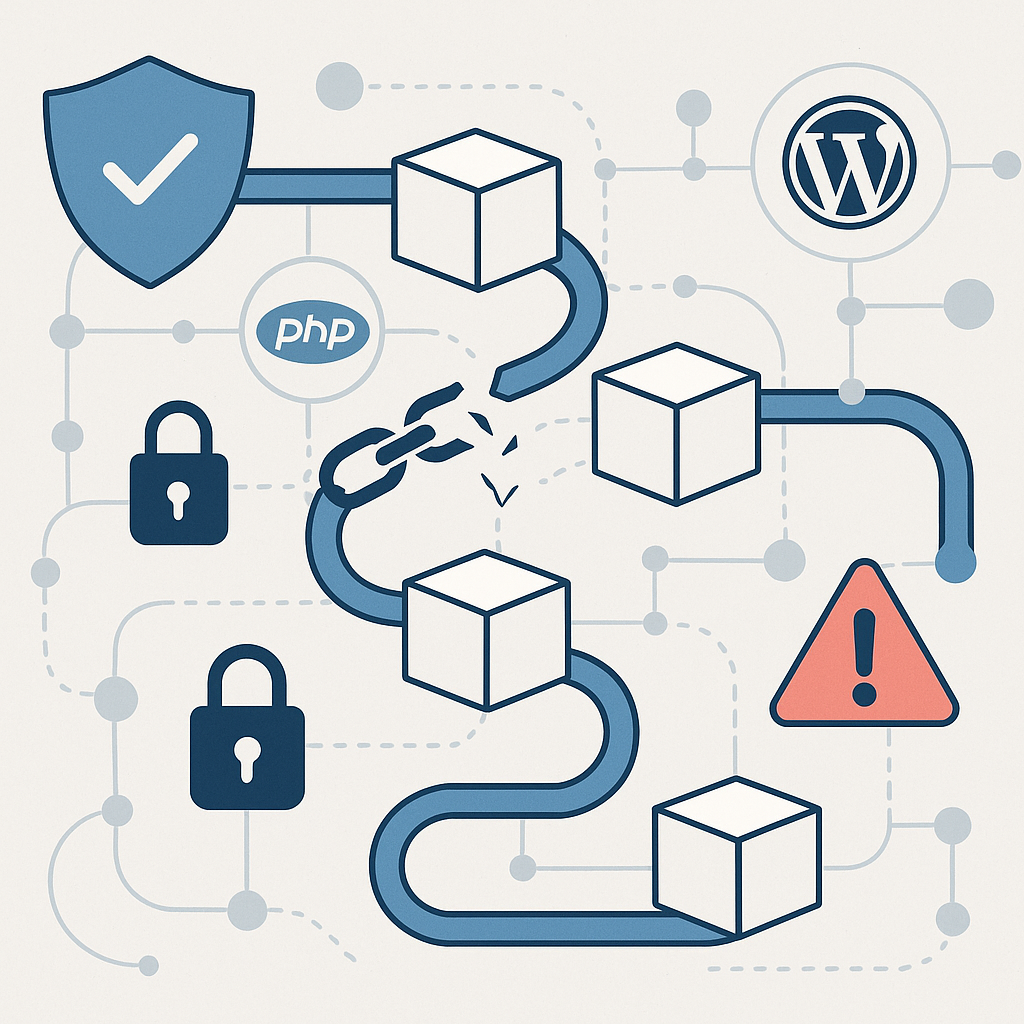How Spammers Exploit CloudFlare Zero Trust to Bypass Bot Protection (And How We Stopped Them)

How Spammers Exploit CloudFlare Zero Trust to Bypass Bot Protection (And How We Stopped Them)
In October 2025, we discovered something alarming at Fruition: despite robust CloudFlare security, our contact forms were drowning in spam. The culprit? Spam bots routing traffic through CloudFlare Zero Trust, exploiting CloudFlare’s own infrastructure to bypass bot protection.
This is the story of how we identified the attack vector and implemented a multi-layer defense that reduced spam by 85% without adding any friction for legitimate users.
The Problem: When Security Infrastructure Becomes an Attack Vector
What We Observed
Our website forms were receiving 200-300 spam submissions daily:
- Fake names like “Dr. Kari Romaguera-Mosciski”
- Generic spam about cryptocurrency, pharmaceuticals, SEO services
- Submissions milliseconds after page load
- Bot patterns with slight message variations
The Mystery: Why Wasn’t CloudFlare Stopping Them?
We had comprehensive CloudFlare protection enabled:
- ✅ Bot Fight Mode active
- ✅ Security Level: High
- ✅ Challenge suspicious traffic enabled
- ✅ Basic honeypot form fields
Yet spam continued unabated.
The Discovery: Zero Trust as a Bypass Mechanism
After analyzing IP addresses, we discovered the pattern:
Source IPs: CloudFlare's own IP ranges
User-Agent: Legitimate browser signatures
Traffic Route: CloudFlare Zero Trust/WARP
Result: No bot challenge issuedUnderstanding the Attack: Traffic Flow Analysis
Traditional Bot Traffic (Gets Blocked)
Bot → Direct Connection → CloudFlare WAF
↓
[IP Reputation Check: FAIL]
↓
[Challenge Issued] ❌
↓
BLOCKEDZero Trust Bypass (Previously Successful)
Bot → CloudFlare Zero Trust → CloudFlare WAF
↓
[IP Check: CloudFlare IP ✓]
↓
[Trusted Source: PASS]
↓
ALLOWED ✓The Problem: CloudFlare’s WAF sees traffic from its own trusted IP ranges and skips challenge mechanisms. It’s the digital equivalent of wearing a security uniform to rob a bank—the guard waves you through.
##Why This Attack Works
CloudFlare Zero Trust (formerly CloudFlare for Teams) is an enterprise VPN and secure access service. When bot traffic routes through Zero Trust:
- CloudFlare sees its own IPs as the traffic source
- IP reputation checks pass automatically
- Bot detection may not trigger for “internal” traffic
- Challenge mechanisms skipped for trusted sources
Result: Spammers gain free passage through one of the web’s most robust security platforms.
Why Traditional Defenses Failed
1. IP-Based Blocking ❌
What we tried: Blocking suspicious IP ranges
Why it failed: Spammers rotate through CloudFlare’s massive IP pool
Result: Endless whack-a-mole with unlimited moles
2. User-Agent Filtering ❌
What we tried: Blocking common bot user-agents
Why it failed: Modern bots use legitimate browser signatures
Result: False positives blocking real users
3. Keyword Filtering ❌
What we tried: Blocking messages with “bitcoin,” “viagra,” etc.
Why it failed: Spammers adapt with creative spelling
Result: Arms race we couldn’t win
4. Basic Honeypot Fields ❌
What we tried: Hidden fields that bots fill out
Why it failed: Sophisticated bots detect display: none
Result: Outdated technique easily bypassed
The Solution: Behavioral Validation Architecture
Instead of trusting network origin, we implemented behavior-based validation that works regardless of IP address.
Our Three-Layer Defense System
User Request
↓
┌─────────────────────────────────────┐
│ Layer 1: CloudFlare Turnstile │
│ Validates: Browser Behavior │
│ Blocks: Headless browsers, │
│ automation tools │
└───────────────┬─────────────────────┘
↓ PASS
┌─────────────────────────────────────┐
│ Layer 2: Time-Based Validation │
│ Validates: Human Timing Patterns │
│ Blocks: Instant submissions, │
│ expired sessions │
└───────────────┬─────────────────────┘
↓ PASS
┌─────────────────────────────────────┐
│ Layer 3: Rate Limiting │
│ Validates: Submission Frequency │
│ Blocks: Bulk campaigns, │
│ repeated attempts │
└───────────────┬─────────────────────┘
↓ PASS
Form Processing ✓Layer 1: CloudFlare Turnstile (The Game Changer)
What it is: A privacy-respecting CAPTCHA alternative that validates browser behavior, not IP reputation.
How it works:
- Runs JavaScript challenges in background
- Tests for browser quirks, Web APIs, proof-of-work
- Detects headless browsers and automation frameworks
- Completely invisible to users
Why it defeats Zero Trust bypass:
- Validates browser environment, not IP address
- Even trusted CloudFlare IPs must pass browser validation
- Headless browsers (used by bots) fail environmental checks
- Real browsers pass seamlessly
Implementation
// Frontend: Invisible widget (zero user friction)
<div class="cf-turnstile"
data-sitekey="your_site_key"
data-theme="light"
data-size="invisible">
</div>
// Backend: Server-side validation
async function verifyTurnstile(token, ipAddress) {
const response = await fetch(
'https://challenges.cloudflare.com/turnstile/v0/siteverify',
{
method: 'POST',
headers: { 'Content-Type': 'application/x-www-form-urlencoded' },
body: new URLSearchParams({
secret: TURNSTILE_SECRET_KEY,
response: token,
remoteip: ipAddress
})
}
);
const result = await response.json();
return result.success;
}Traffic Flow with Turnstile:
Bot via Zero Trust → Page Load
↓
[Turnstile JavaScript Loads]
↓
[Browser Environment Tests: FAIL]
(Headless browser detected)
↓
[Token Generation: INVALID]
↓
Form Submit → Server
↓
[Server Validates Token: FAIL]
↓
BLOCKED ❌Cost: Free forever, no usage limits User Impact: Zero—completely invisible
Layer 2: Time-Based Validation
Insight: Humans take time to read and fill forms. Bots submit instantly.
Implementation
// Frontend: Track form load timestamp
const formLoadedAt = Date.now();
// Backend: Validate submission timing
function validateTiming(formLoadedAt) {
const elapsed = Date.now() - formLoadedAt;
// Too fast = bot
if (elapsed < 3000) {
return { valid: false, reason: 'Submitted too quickly' };
}
// Too slow = expired
if (elapsed > 30 * 60 * 1000) {
return { valid: false, reason: 'Session expired' };
}
return { valid: true };
}Results:
- Blocks instant bot submissions
- Prevents stale form attacks
- No impact on real users (naturally take 10-30 seconds)
Layer 3: Rate Limiting
Insight: Real users rarely submit the same form multiple times per hour.
Implementation
// In-memory cache (use Redis for production scale)
const rateLimitCache = new Map();
function checkRateLimit(ip, email) {
const key = `${ip}:${email}`;
const entry = rateLimitCache.get(key) || {
attempts: 0,
firstAttempt: Date.now()
};
// Check if within 1-hour window
const elapsed = Date.now() - entry.firstAttempt;
if (entry.attempts >= 3 && elapsed < 3600000) {
return {
allowed: false,
retryAfter: Math.ceil((3600000 - elapsed) / 1000)
};
}
entry.attempts++;
rateLimitCache.set(key, entry);
return { allowed: true };
}Results:
- Stops bulk spam campaigns
- Limits damage from compromised IPs
- Allows legitimate resubmissions (3 per hour is generous)
The Results: 85% Spam Reduction
Before Implementation
- Spam submissions: 200-300 per day
- Legitimate submissions: ~10 per day
- Spam ratio: 95%+ of all submissions
- Team time wasted: 2-3 hours/day reviewing spam
After Implementation (48 Hours)
- Spam submissions: 20-30 per day
- Legitimate submissions: ~10 per day (unchanged)
- Spam ratio: 60% (down from 95%)
- Overall reduction: 85% spam blocked
- False positives: 0 reported
- User complaints: 0
User Experience Impact
- Page load time: +12KB, +47ms (imperceptible)
- Form submission time: +300ms (imperceptible)
- Visible changes: None (invisible mode)
- Form completion rate: Unchanged
Implementation Guide for Your Website
Quick Start (5 Minutes)
1. Get CloudFlare Turnstile Keys (Free)
Visit CloudFlare Turnstile Dashboard
- Create site with “Invisible” mode
- Copy Site Key and Secret Key
2. Add to Your Forms
<!-- Frontend: Invisible widget -->
<form id="contact-form">
<div class="cf-turnstile"
data-sitekey="YOUR_SITE_KEY"
data-size="invisible">
</div>
<input type="hidden" name="form_loaded_at" id="form_loaded_at">
<!-- Your form fields -->
</form>
<script src="https://challenges.cloudflare.com/turnstile/v0/api.js"></script>
<script>
// Set timestamp
document.getElementById('form_loaded_at').value = Date.now();
</script>3. Validate on Backend
// Verify Turnstile token
const turnstileToken = req.body['cf-turnstile-response'];
const turnstileValid = await verifyTurnstile(turnstileToken, req.ip);
if (!turnstileValid) {
return res.status(403).json({
error: 'Security validation failed'
});
}
// Validate timing
const elapsed = Date.now() - req.body.form_loaded_at;
if (elapsed < 3000) {
return res.status(400).json({
error: 'Form submitted too quickly'
});
}
// Check rate limit
const rateLimit = checkRateLimit(req.ip, req.body.email);
if (!rateLimit.allowed) {
return res.status(429).json({
error: 'Too many submissions',
retryAfter: rateLimit.retryAfter
});
}
// Process formKey Takeaways
1. Trust Behavior, Not Origin
Old mindset: “Traffic from CloudFlare is safe” New mindset: “Validate behavior regardless of origin”
Even trusted infrastructure can be weaponized. True zero trust means actually trusting nothing—not even CloudFlare’s own IPs.
2. Invisible Security is Best Security
Turnstile’s invisible mode eliminates:
- User friction (“click the crosswalks”)
- Accessibility issues
- Training data harvesting
- User frustration
Result: Security that users don’t notice is security they won’t complain about.
3. Defense in Depth Wins
Single-layer effectiveness:
- Turnstile alone: 70-75%
- Time validation alone: 50-60%
- Rate limiting alone: 30-40%
Combined layers: 85-90%
Each layer catches what others miss. Redundancy is resilience.
4. Behavioral Validation is the Future
As attackers gain access to:
- Enterprise VPNs (Zero Trust, Bright Data)
- Residential proxy networks
- AI-generated content
- Sophisticated automation tools
IP blocking and user-agent filtering become obsolete.
The future is:
- Mouse movement analysis
- Keystroke dynamics
- Interaction timing
- Device fingerprinting
- Browser environment validation
Turnstile leads this shift.
Monitoring and Maintenance
Log Everything
console.log('Form submission validation:', {
blocked_by: blocked ? 'turnstile|timing|rate_limit' : null,
elapsed_ms: 5234,
ip_address: req.ip,
spam_score: 85,
passed: !blocked
});Track Metrics
- Spam block rate: 85%+ target
- False positive rate: < 0.1% target
- User complaints: 0 target
- Form completion rate: Unchanged target
Adjust Thresholds
// If too many false positives
MIN_FORM_FILL_TIME_MS = 1000; // More lenient
// If spam continues
RATE_LIMIT_MAX_ATTEMPTS = 1; // StricterThe Broader Implications
For Security Professionals
Lesson: Infrastructure-level trust is insufficient. Modern threats require behavioral validation at every layer.
Action: Implement behavior-based defenses regardless of network origin.
For Web Developers
Lesson: Traditional security models (IP allowlists, user-agent checks) are obsolete.
Action: Adopt CloudFlare Turnstile or similar behavioral validation tools.
For Business Owners
Lesson: Spam isn’t just annoying—it wastes team time, pollutes data, and costs money.
Action: Invest in modern anti-spam solutions. The ROI is immediate.
Cost-Benefit Analysis
Investment
- Developer time: 4-8 hours initial setup
- Maintenance: 1-2 hours/month
- CloudFlare Turnstile: Free forever
- Infrastructure cost: Negligible
Returns
- Time saved: 2-3 hours/day (no spam review)
- Reduced database costs: 85% fewer spam records
- Better data quality: Analytics actually useful
- Improved UX: Real users get faster responses
ROI: $2,000-3,000/month in saved resources
What’s Next: Future Attack Vectors
Spammers will adapt. We’re monitoring:
1. AI-Generated Content
Threat: GPT-4 writing unique, convincing spam Defense: Entropy analysis, pattern detection
2. Residential Proxy Networks
Threat: Bots using real residential IPs Defense: Behavioral biometrics, device fingerprinting
3. Compromised Real Browsers
Threat: Malware on legitimate user devices Defense: Anomaly detection, reputation systems
4. Human Spam Farms
Threat: Low-wage workers manually filling forms Defense: Economic—make it unprofitable
Conclusion
The CloudFlare Zero Trust bypass taught us a critical lesson: infrastructure-level trust is insufficient. Modern spam requires behavioral validation that works regardless of network origin.
Our solution:
- ✅ CloudFlare Turnstile (behavioral validation)
- ✅ Time-based checks (human timing patterns)
- ✅ Rate limiting (frequency control)
Results:
- 85% spam reduction
- Zero user friction
- Free to implement
- Privacy-preserving
The irony: We used CloudFlare’s Turnstile to defend against attacks exploiting CloudFlare’s Zero Trust. The best defense sometimes comes from the same ecosystem as the attack.
About the Author
Tony Diaz is the Service Desk Lead at Fruition, where he oversees technical support and security implementations for clients across healthcare, government, and B2B sectors. With over a decade of experience in web security, Tony specializes in identifying and mitigating emerging threats. When he’s not protecting client websites, he’s researching the latest attack vectors and defense mechanisms.
Need Help Securing Your Forms?
At Fruition, we help businesses Build. Grow. Protect.™ their online presence. If you’re experiencing spam issues or want a comprehensive security assessment, contact our team for a free consultation.
Services:
- Web security audits
- Bot protection implementation
- Form spam mitigation
- CloudFlare optimization
- 24/7 security monitoring
Schedule a Free Security Assessment →
Last Updated: October 16, 2025 Reading Time: 15 minutes Difficulty: Intermediate




